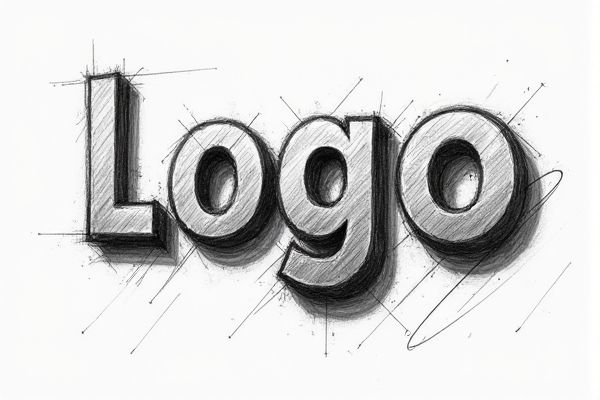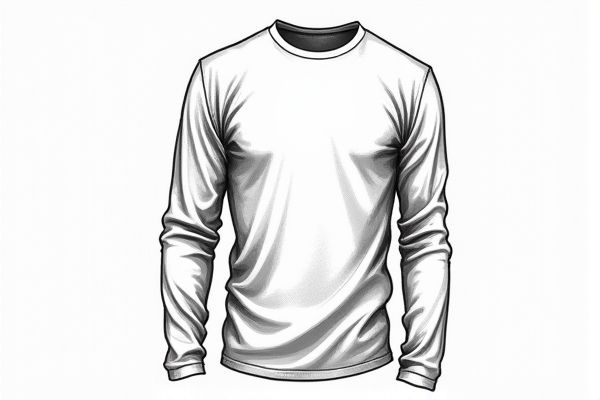In today's competitive market, selecting the perfect logo font can significantly impact brand identity and recognition. With a myriad of typefaces to choose from, some brands have consistently stood out for their exceptional design and creative prowess. Featuring a harmonious blend of aesthetics and functionality, these brands have become leading choices for companies looking to make a memorable imprint with their logo designs. Discover the top brands renowned for their impressive logo fonts below.

Illustration of logo fonts
Best brands of logo fonts in 2025
Helvetica
Helvetica is one of the most prolific and widely used typefaces globally, particularly in the fashion and corporate worlds, due to its simplicity, versatility, and adaptability. It has been adopted by numerous brands, including BMW, Fendi, and Verizon, for their logos and communication, making it a common denominator across different industries and aesthetics. Its neutral and objective nature has made it a favorite in the advertising world, used to promote diverse products from Volkswagen to Coca-Cola. Helvetica's popularity was further solidified when Steve Jobs selected it as the headline font for Macintosh computers in 1984. Despite its widespread use, it remains a standard in logo design, reflecting its enduring appeal. For a comprehensive overview of typefaces similar to Helvetica, you can check out this informative guide on Helvetica alternatives.
Gotham
Gotham, designed by Tobias Frere-Jones in 2000, is a highly acclaimed geometric sans-serif typeface renowned for its use in prominent logos and branding. It was notably featured in the 2008 Barack Obama presidential campaign and is favored by companies like AMC Networks, Chipotle Mexican Grill, and DC Comics for its bold and trustworthy appearance. Gotham's versatility is evident in its 66 styles, supporting 60 languages, and its use in various widths and weights. The font's popularity has made it a staple in modern branding, with its clean and geometric structure contributing to its widespread adoption. Its influence extends to inspiring other fonts like Montserrat and Raleway. For more on famous logos created with Gotham font, visit the linked resource.
Futura
Futura, designed by Paul Renner in the 1920s, is a seminal geometric sans-serif font that has become a cornerstone in modern typography, particularly for logo design. Its high readability, modern strokes, and geometric shapes make it a versatile and widely adopted typeface. Brands like Supreme, PayPal, and Omega have utilized Futura or Futura-inspired fonts to project innovation, reliability, and precision. The font's enduring popularity is evident in its use on the Apollo 11 moon plaque and its inclusion in various licensing versions by major type companies, such as Monotype and Adobe. With over 100 styles and support for 89 languages in the Futura Now family, it continues to meet the evolving needs of the 21st century. For more details, visit the Monotype Futura Now page.
Avenir
Avenir, designed by Adrian Frutiger in 1988, is a highly acclaimed geometric sans-serif typeface renowned for its clarity, legibility, and versatile design. It is widely used in corporate branding, airport signage, and various other applications where readability is crucial. The Avenir font family includes 12 distinctive styles, ranging from light to robust weights, and supports a wide range of Latin languages, making it a globally applicable choice. Its popularity is evident in its adoption by prominent entities such as the city of Amsterdam, the State University of New York, and Apple for their Maps app and Siri screens. Avenir's timeless quality and modern design have solidified its position as a go-to font for designers seeking a balance between past and future design elements. For more insights, you can explore detailed information about the Avenir font family.
Proxima Nova
Proxima Nova, designed by Mark Simonson in 2005, is a highly acclaimed sans-serif font that has become a staple in logo design, particularly among tech companies and modern brands. It bridges the gap between Futura and Akzidenz Grotesk, offering a balanced blend of modern proportions and geometric appearance. Proxima Nova is renowned for its extensive character set, including 42 fonts with seven weights in three widths, and italics, making it highly versatile. Since its release, it has gained immense popularity, being used on hundreds of thousands of websites worldwide. Its clean and elegant appearance, along with excellent legibility across different sizes and devices, makes it an ideal choice for logos. For more details, you can explore the Proxima Nova font on its official page.
Univers
Univers is a seminal sans-serif typeface family designed by Adrian Frutiger and released by Deberny & Peignot in 1957, renowned for its comprehensive range of weights and widths. It was one of the first typefaces to offer a consistent, matched range of styles, making it a favorite among designers and corporations, including Swiss International Air Lines, Deutsche Bank, and General Electric. Univers was also used in the visual identities of UNICEF, eBay, and Audi, and even by Apple for its computer keycaps until 2007. Its innovative two-digit classification system and uniform design have made it a staple in graphic design, particularly in the "Swiss style" of typography. The Linotype Univers, reworked in 1997, includes 63 fonts and extended variations. You can find more information about Univers on its dedicated page.
Baskerville
Baskerville is a classic and elegant serif font, renowned for its refined letterforms and easy readability, making it a popular choice for businesses aiming to convey tradition and sophistication. It has been shown to influence perception, with an experiment by Errol Morris indicating that Baskerville promotes a higher belief in the truth of a passage compared to other fonts, at a statistically significant level. This font, dating back to the 18th century, is versatile and works well in both logos and body text, enhancing brand identity. Its use can significantly impact user perception, with studies suggesting it can nudge readers towards believing a sentence is true. Baskerville's effectiveness in branding is further underscored by its ability to increase brand recognition and readability. You can read more about the impact of Baskerville in the article titled The Font of Truth: The Beauty of Baskerville.
Garamond
Garamond is a highly esteemed font family, renowned for its classic, elegant, and readable design, making it a favorite among brands for logo creation. Designed by Claude Garamond in the 16th century, it has evolved with modern variations such as Adobe Garamond Pro, introduced in 1989, which is considered one of the most readable serif typefaces in print. Companies like Apple, Abercrombie & Fitch, and Rolex have utilized Garamond to convey a sense of tradition and nobility, enhancing their brand recognition by up to 80% through consistent font use. The font's versatility and high legibility have made it a staple in publishing, with books like the Harry Potter series and the Hunger Games using it extensively. Its use in logos and branding continues to be popular, reflecting its timeless appeal. For more insights into its application in visual media, visit the comprehensive typography guide.
Open Sans
Open Sans, designed by Steve Matteson, is a highly popular and versatile humanist sans serif typeface, widely used for its neutral and friendly appearance. It is the most used Google Font on lawyer websites, featured on 14,074 sites, making up 24.504% of the total, and serves over four billion views per day across more than 20 million websites. As of March 2021, Open Sans includes a variable font version and supports Hebrew characters. Its widespread adoption is evident in its use on major platforms like google.com and youtube.com. Around 70% of Fortune 500 companies prefer sans-serif fonts like Open Sans for their logos.
Montserrat
Montserrat, declared the 2024 'Font of the Year' by Fiverr, stands out as a versatile and modern sans-serif typeface, ideal for business branding due to its clean geometric lines and wide range of weights and styles. Designed by Julieta Ulanovsky, it draws inspiration from the traditional signage in Buenos Aires and is part of Google's open-source font catalog, used in over 20 million websites. Its popularity is evident from its top ranking in Fiverr Logo Maker sales and designer preferences, making it a go-to choice for contemporizing visual language. Montserrat's versatility allows it to be used in both digital and print design projects, and it is favored by global companies like Google, J.Crew, and Netflix. This font's broad acceptance highlights its significance in modern communication.
















Leave a Reply
Your email address will not be published.